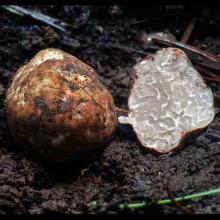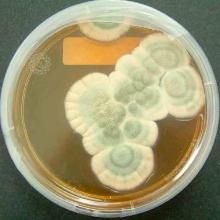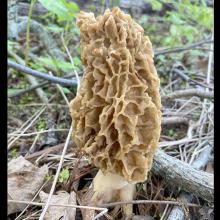Tuber gibbosum
Common name:
Oregon white truffle
Class:
Pezizomycetes
Order:
Pezizales
Phylum:
Ascomycota
Penicillium roqueforti
Common name:
Roquefort cheese
Class:
Eurotiomycetes
Order:
Eurotiales
Phylum:
Ascomycota
Penicillium chrysogenum
Common name:
Penicillin
Class:
Eurotiomycetes
Order:
Eurotiales
Phylum:
Ascomycota
Morchella esculenta
Common name:
Common morel
Class:
Pezizomycetes
Order:
Pezizales
Phylum:
Ascomycota
Tuber gibbosum
Common name:
Oregon white truffle
Class:
Pezizomycetes
Order:
Pezizales
Phylum:
Ascomycota
Penicillium roqueforti
Common name:
Roquefort cheese
Class:
Eurotiomycetes
Order:
Eurotiales
Phylum:
Ascomycota
Penicillium chrysogenum
Common name:
Penicillin
Class:
Eurotiomycetes
Order:
Eurotiales
Phylum:
Ascomycota
Morchella esculenta
Common name:
Common morel
Class:
Pezizomycetes
Order:
Pezizales
Phylum:
Ascomycota
Tuber gibbosum
Common name:
Oregon white truffle
Class:
Pezizomycetes
Order:
Pezizales
Phylum:
Ascomycota
Penicillium roqueforti
Common name:
Roquefort cheese
Class:
Eurotiomycetes
Order:
Eurotiales
Phylum:
Ascomycota
Penicillium chrysogenum
Common name:
Penicillin
Class:
Eurotiomycetes
Order:
Eurotiales
Phylum:
Ascomycota
Morchella esculenta
Common name:
Common morel
Class:
Pezizomycetes
Order:
Pezizales
Phylum:
Ascomycota
Phylum (Fungi): Ascomycota
Ascomycota is a phylum of the kingdom Fungi that, together with the Basidiomycota, forms the subkingdom Dikarya. Its members are commonly known as the sac fungi or ascomycetes. It is the largest phylum of Fungi, with over 64,000 species. The defining feature of this fungal group is the "ascus" (from Greek: ἀσκός (askos), meaning "sac" or "wineskin"), a microscopic sexual structure in which nonmotile spores, called ascospores, are formed. However, some species of the Ascomycota are asexual, meaning that they do not have a sexual cycle and thus do not form asci or ascospores. Familiar examples of sac fungi include morels, truffles, brewer's yeast and baker's yeast, dead man's fingers, and cup fungi. The fungal symbionts in the majority of lichens (loosely termed "ascolichens") such as Cladonia belong to the Ascomycota.
Ascomycota is a monophyletic group (it contains all descendants of one common ancestor). Previously placed in the Deuteromycota along with asexual species from other fungal taxa, asexual (or anamorphic) ascomycetes are now identified and classified based on morphological or physiological similarities to ascus-bearing taxa, and by phylogenetic analyses of DNA sequences.
The ascomycetes are of particular use to humans as sources of medicinally important compounds, such as antibiotics, for fermenting bread, alcoholic beverages and cheese. Penicillium species on cheeses and those producing antibiotics for treating bacterial infectious diseases are examples of ascomycetes.
Many ascomycetes are pathogens, both of animals, including humans, and of plants. Examples of ascomycetes that can cause infections in humans include Candida albicans, Aspergillus niger and several tens of species that cause skin infections. The many plant-pathogenic ascomycetes include apple scab, rice blast, the ergot fungi, black knot, and the powdery mildews. Several species of ascomycetes are biological model organisms in laboratory research. Most famously, Neurospora crassa, several species of yeasts, and Aspergillus species are used in many genetics and cell biology studies.
Reference: Wikipedia




